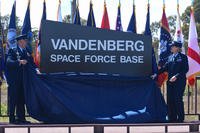JOINT BASE LEWIS-MCCHORD, Wash. – A springtime, brigade-wide inactivation will not keep soldiers of 2nd Squadron, 1st Cavalry Regiment, 4-2 Stryker Brigade Combat Team, 7th Infantry Division from pursuing individual training.
Sgt. 1st Class Jonathan Karns, the master trainer for the squadron, oversees the training conducted in the unit.
Right now, the unit is focused on individual tasks, beginning with basic preliminary training, said Karns, an Eatonville, Wash., native.
Maj. Ted Stokes, the operations officer for 2nd Sqdn., 1st Cav. Regt. said individual tasks are important.
“All the soldiers are going to (transfer to) other units that are further along in their training progression than where we’re at, so it benefits the soldier and it benefits those gaining units to have a guy who’s proficient in his individual tasks,” Stokes said.
Since returning from a nine-month deployment to Afghanistan, Soldiers have had preliminary marksmanship training on small-arms weapons systems.
First, leaders go over basic rifle marksmanship with soldiers, including the assembly and disassembly of a weapon, and how to perform a functions check, Karns said.
As training progresses, they move on to digital marksmanship using the Engagement Skills Trainer 2000.
According to the Army field manual that governs the EST 2000, it supports realistic and comprehensive rifle marksmanship instruction, identifies soldiers' needs by requiring them to satisfy requirements in order to progress, and facilitates any necessary remedial training prior to qualification.
In an effort to mirror live qualifications, soldiers wear body armor and protective gear while firing a simulated weapon system at a projected target on a screen.
The final step is qualification on an outdoor range. However, due to the brigade’s future inactivation, acquiring the equipment and ranges necessary for training has not been an easy task for the leaders of 2nd Sqdn., 1st Cav.
Once leaders receive feedback on what land and assets they have acquired, they must match what they have against what they originally wanted, explained Karns. “It really puts a strain on the leaders trying to get the information to the Soldiers because it takes … time to figure out where we’re at, what we’re getting and what we’re not getting and then finally getting that information out to the Soldiers in a timely manner … takes a little effort.”
As the inactivation gets closer, the unit has to shift its priorities.
“We’re at a decision point right now where we’re going to transition to an equipment focus-based timeline for inactivation and Campaign On Property Accountability,” Stokes, a Fort Myers, Fla., native, said.
During COPA, units within the brigade will turn in all of their extra equipment to be recycled back into the Army.
“We’ve been able to marshal it and fence off training and equipment events so we haven’t had an issue yet,” he explained.
Stokes said the professional development training the unit has been focusing on will sustain and not affect the unit’s operation cycle “too much.”
“By scheduling that, we can pull the leaders out for small amounts of time and conduct training that’s helpful,” Stokes added.
That includes training across the spectrum, from garrison operations and logistical management to training management, said Stokes.
“Don’t get the impression that we’re ceasing all training: we’re not. Everything we do is training,” Stokes said. “Motor stables is maintenance training (and) COPA is logistical and systems training.”
When soldiers question why they are still training when the brigade faces inactivation, Karns’ answer is clear: so they can be ready.
“You have time to train your soldiers, use that time wisely. Take advantage of the time you have now,” Karns said. “Even if you have to do it again you have the fundamentals down.”

























